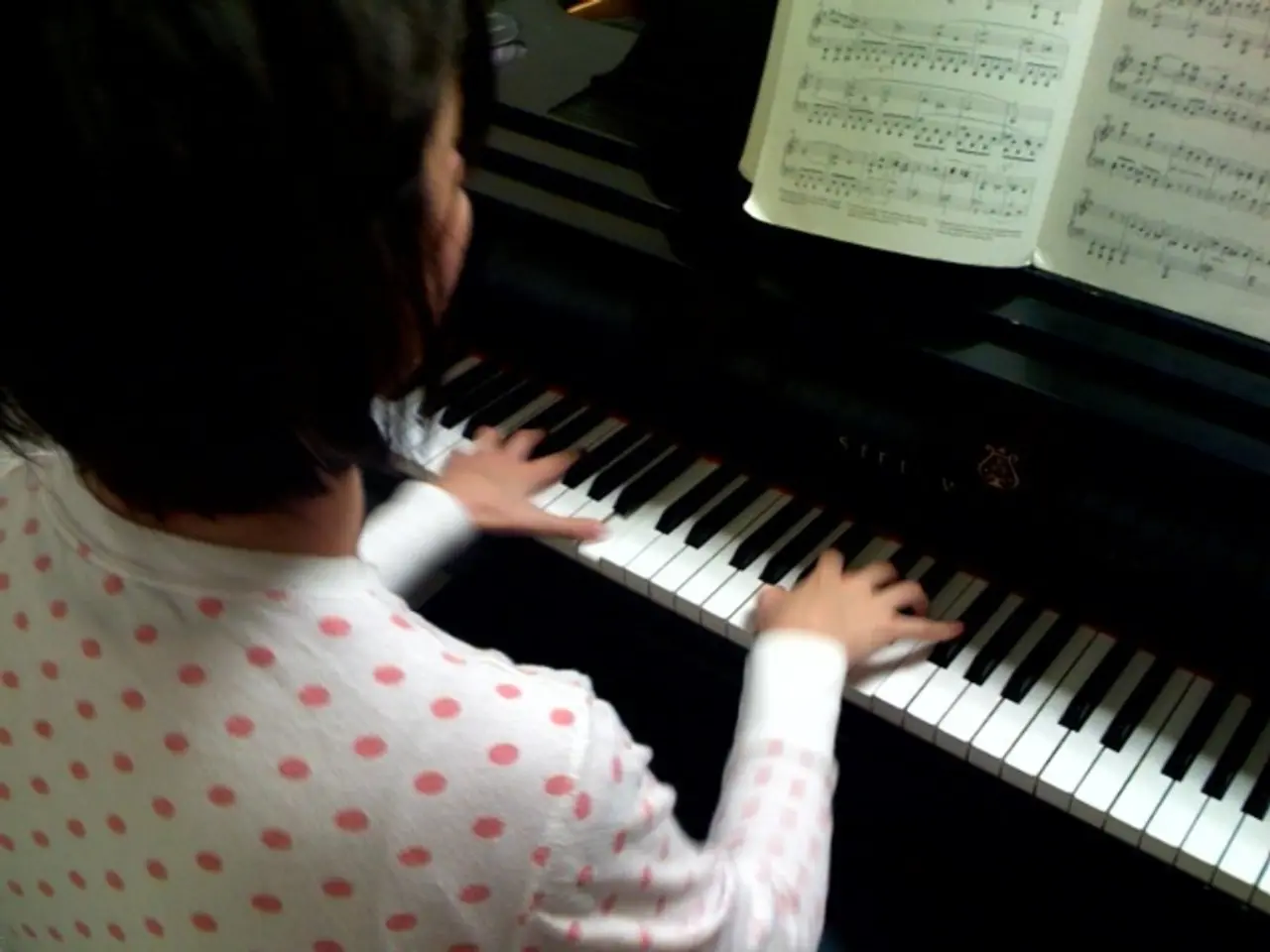Unique and peculiar melodies crafted by composer Erik Satie stand out among his works
In the realm of classical and avant-garde music, Erik Satie (1866-1925) stands out as a trailblazer, with several extraordinary compositions that continue to captivate audiences today. Here's a closer look at some of his most significant works:
**Gymnopédies**
Composed between 1887 and 1895, the *Gymnopédies* are a set of three piano pieces, each with a unique mood: "painful," "sad," and "grave." These pieces, titled *Trois Gymnopédies* ("Three Nude Dances"), are characterized by their slow tempo, gentle melodies, and melancholic, atmospheric quality. Subtle dissonances against harmonies create a piquant sadness, and the pieces are written in 3/4 time. The *Gymnopédies* gained popularity for their serene simplicity and haunting beauty, with Claude Debussy even orchestrating some of them to help popularize Satie's work.
**Gnossiennes**
Like the *Gymnopédies*, the *Gnossiennes* are a set of short piano pieces composed around the same period. They continue Satie’s exploration of modal harmony and lack traditional time signatures or bar lines, giving them a mysterious and free-flowing character. The *Gnossiennes* are marked by their sensual and enigmatic sound, often evoking an exotic or ancient ambiance.
**Je te veux**
A romantic and somewhat playful waltz, *Je te veux* was written for voice and piano, showcasing Satie’s lighter, dance-inspired side. First performed in 1903 at La Scala, in Paris, it has been recorded many times since.
**Parade**
*Parade*, a groundbreaking ballet premiered in 1917, combines elements of classical music, popular tunes, and avant-garde sounds, co-created with Pablo Picasso (sets) and Jean Cocteau (scenario). It marked a departure from traditional ballet, embracing modernism and absurdism, and reflects Satie's innovative spirit.
**Véritables préludes flasques pour un chien**
Translated as “True Flabby Preludes for a Dog,” this is a quirky piano suite displaying Satie’s signature humor and eccentricity. Its simple, almost naive melodies pair with whimsical titles and moods, challenging traditional notions of musical seriousness and virtuosity.
**Trois Morceaux en forme de poire**
Meaning “Three Pieces in the Form of a Pear,” this ironically titled piano duet work actually contains seven pieces. The playful title and the structure itself are examples of Satie’s whimsical and nonconformist style, mixing parody with subtle musical innovation.
**Vexations**
*Vexations* is one of Satie’s most experimental pieces, consisting of a short motif to be repeated 840 times. Its extreme repetition and simplicity challenge conventional music listening and performance, prefiguring minimalist and conceptual music trends much later.
**Cinq Nocturnes**
While less famous than the *Gymnopédies* or *Gnossiennes*, the *Cinq Nocturnes* are a set of five piano pieces characteristic of Satie’s contemplative style, highlighting his ability to evoke moods with sparse, delicate harmonies.
Satie's **Messe des Pauvres (Mass for the Poor)** stands out as a spiritually profound work, using Gregorian chant influences, organ, and choir. It contrasts with his more playful salon pieces by offering deep introspection and meditative textures.
Together, these works illustrate Satie’s pioneering approach to composition: blending simplicity with subtle complexity, humor with seriousness, and tradition with innovation. He paved the way for many 20th-century musical movements and remains a uniquely influential figure in classical and popular music history.
In the vast landscape of entertainment, Erik Satie's contribution to classical and avant-garde music resonates significantly, particularly in the realm of pop-culture. His compositions, such as the 'Gymnopédies' and 'Gnossiennes', are not just piano pieces but immersive journeys into the realms of sci-fi and fantasy, and even celebrities of music circles have admired them for their enigmatic beauty. 'Parade', a groundbreaking ballet, bridged the gap between classical music and movies-and-tv, embodying modernism and absurdism that rivals the avant-garde vibes of the big screen. Moreover, 'Vexations' with its extreme repetition and minimalism, prefigures the trend of conceptual music and minimalist movements that dominates the music-scape today. Indeed, Satie was more than a classical composer; he was a trailblazer in the realm of pop-culture and entertainment.





